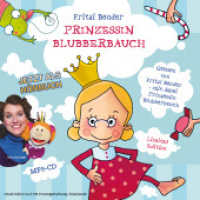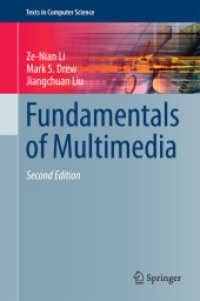Full Description
Kaqchikel is one of approximately thirty Mayan languages spoken in Belize, Guatemala, Mexico, and, increasingly, the United States. Of the twenty-two Mayan languages spoken in Guatemala, Kaqchikel is one of the four "mayoritarios," those with the largest number of speakers. About half a million people living in the central highlands between Guatemala City and Lake Atitlán speak Kaqchikel. And because native Kaqchikel speakers are prominent in the field of Mayan linguistics, as well as in Mayan cultural activism generally, Kaqchikel has been adopted as a Mayan lingua franca in some circles.
This innovative language-learning guide is designed to help students, scholars, and professionals in many fields who work with Kaqchikel speakers, in both Guatemala and the United States, quickly develop basic communication skills. The book will familiarize learners with the words, phrases, and structures used in daily communications, presented in as natural a way as possible, and in a logical sequence. Six chapters introduce the language in context (greetings, the classroom, people, the family, food, and life) followed by exercises and short essays on aspects of Kaqchikel life. A grammar summary provides in-depth linguistic analysis of Kaqchikel, and a glossary supports vocabulary learning from both Kaqchikel to English and English to Kaqchikel. These resources, along with sound files and other media on the Internet at ekaq.stonecenter.tulane.edu, will allow learners to develop proficiency in all five major language skills-listening comprehension, speaking, reading, writing, and sociocultural understanding.
Contents
Preface
Acknowledgments
1. ¡Ütz apetik! / Welcome!
the Kaqchikel language; learning less-commonly taught languages; using this text; the alphabet
2. ¿La Ütz awÄch? / How are you?
greetings, names, your town; personal and possessive pronouns, asking questions; Mayan names, Mayan towns, Kaqchikel communities today
3. Ri tijob'Äl / The classroom
here and there, common activities, colors, descriptions, numbers 1-20; intransitive verbs, possessive pronouns, ordinal numbers, Mayan numerals, Mayan numbers today.
4. Ri winaqi' / People
age and gender, common actions, clothing, body parts, whose is it?, under, over, etc., emotions and conditions; nouns plurals, transitive verbs, possessed nouns, relational nouns, expressing emotions, the backstrap loom.
5. Ri ach'alal / The family
jobs and professions, parts of the house, events in the past; kinship terms, past tense, direct object pronouns, Mayan households, Kaqchikel families today.
6. Ri q'utu'n / Food
animals, fruits and vegetables, flavors, meals, likes and dislikes, plural animal names, describing flavors, expressing preferences, milpa farming today
7. ti k'aslemal / Life
the weather, morning and evening routines, household chores; reflexive verbs, relational nouns, market day
8. Kemchi' / Grammar Summary (Judith M. Maxwell)
9. CholtzÏj / Glossary (Walter E. Little)
Sources Cited and Further Reading
Answer Key








